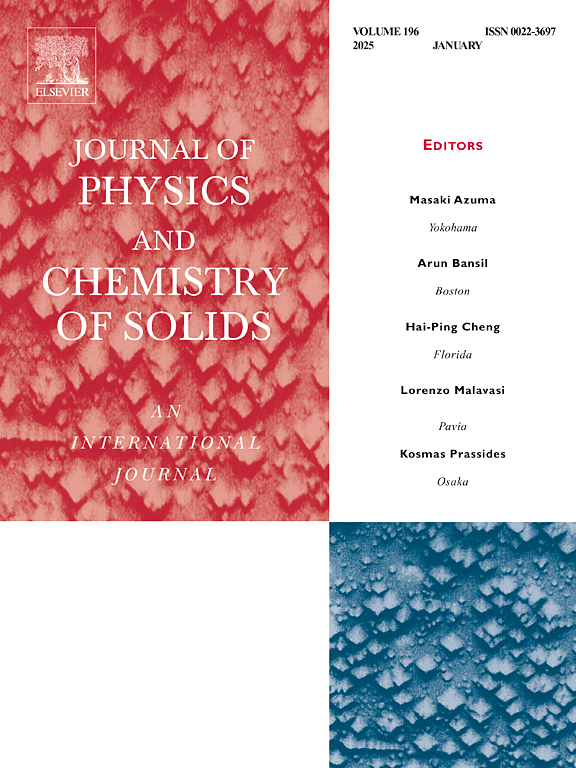Natural graphite coated with Li2SiO3–Li2CO3-CNTs composite by solvothermal synthesis for high-performance sulfide-based all-solid-state lithium batteries
IF 4.3
3区 材料科学
Q2 CHEMISTRY, MULTIDISCIPLINARY
引用次数: 0
Abstract
Natural graphite is used as the anode material for sulfide-based all-solid-state lithium batteries, but the sulfide solid electrolyte causes problems with the natural graphite, the performance of which needs to be improved. Natural graphite coated with a Li2SiO3 and Li2CO3 composite was prepared by solvothermal synthesis at 650 °C for sulfide-based all-solid-state lithium batteries. The coating was intended to prevent decomposition of the solid electrolyte at low potential, cracking of the graphite or solid electrolyte, and separation of the bond between the graphite and solid electrolyte as a result of volume expansion and shrinkage during insertion and desorption of lithium ions into the graphite. Coating natural graphite with the Li2SiO3 and Li2CO3 composite improved the capacity retention rate after the 100th charging, and the addition of carbon nanotubes to the composite improved the rate characteristics. This study demonstrates that high-performance natural graphite can be developed as an anode material for sulfide-based all-solid-state lithium batteries.
溶剂热合成天然石墨包覆Li2SiO3-Li2CO3-CNTs复合材料用于高性能硫化物基全固态锂电池
天然石墨被用作硫化物基全固态锂电池的负极材料,但硫化物固体电解质对天然石墨造成了问题,其性能有待提高。采用650℃溶剂热合成法制备了天然石墨包覆Li2SiO3和Li2CO3复合材料,用于硫化物基全固态锂电池。该涂层旨在防止固体电解质在低电位下分解,石墨或固体电解质开裂,以及锂离子插入和解吸石墨时体积膨胀和收缩导致石墨和固体电解质之间的键分离。用Li2SiO3和Li2CO3复合材料包覆天然石墨提高了第100次充电后的容量保持率,在复合材料中加入碳纳米管改善了速率特性。该研究表明,高性能天然石墨可以作为硫化物基全固态锂电池的负极材料。
本文章由计算机程序翻译,如有差异,请以英文原文为准。
求助全文
约1分钟内获得全文
求助全文
来源期刊
CiteScore
7.80
自引率
2.50%
发文量
605
审稿时长
40 days
期刊介绍:
The Journal of Physics and Chemistry of Solids is a well-established international medium for publication of archival research in condensed matter and materials sciences. Areas of interest broadly include experimental and theoretical research on electronic, magnetic, spectroscopic and structural properties as well as the statistical mechanics and thermodynamics of materials. The focus is on gaining physical and chemical insight into the properties and potential applications of condensed matter systems.
Within the broad scope of the journal, beyond regular contributions, the editors have identified submissions in the following areas of physics and chemistry of solids to be of special current interest to the journal:
Low-dimensional systems
Exotic states of quantum electron matter including topological phases
Energy conversion and storage
Interfaces, nanoparticles and catalysts.

 求助内容:
求助内容: 应助结果提醒方式:
应助结果提醒方式:


